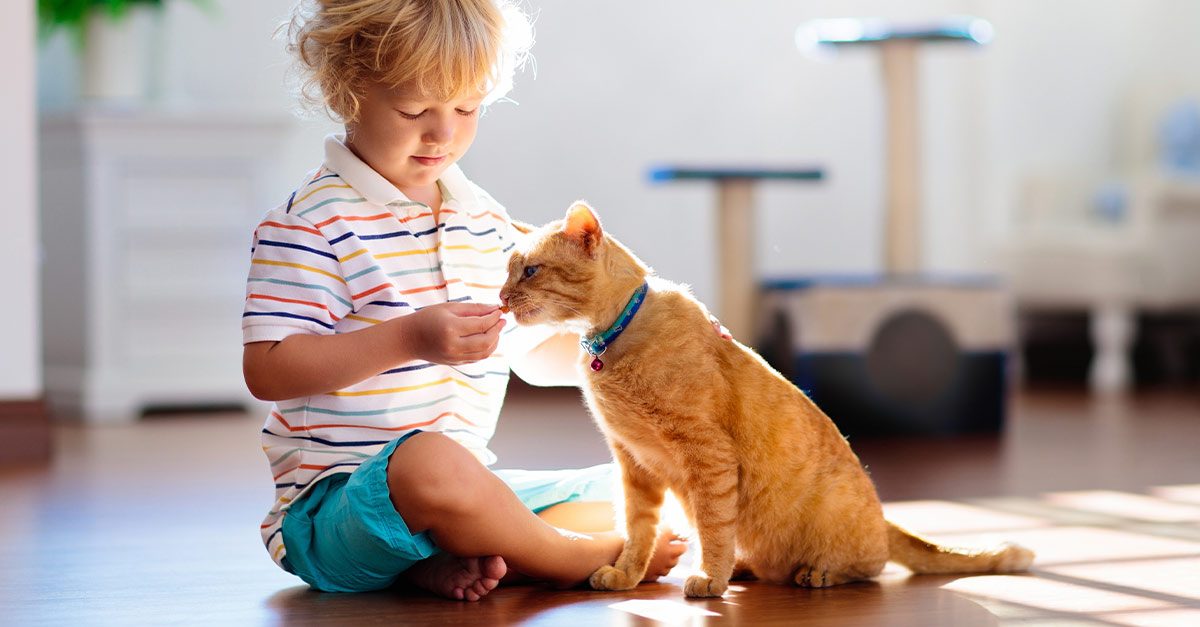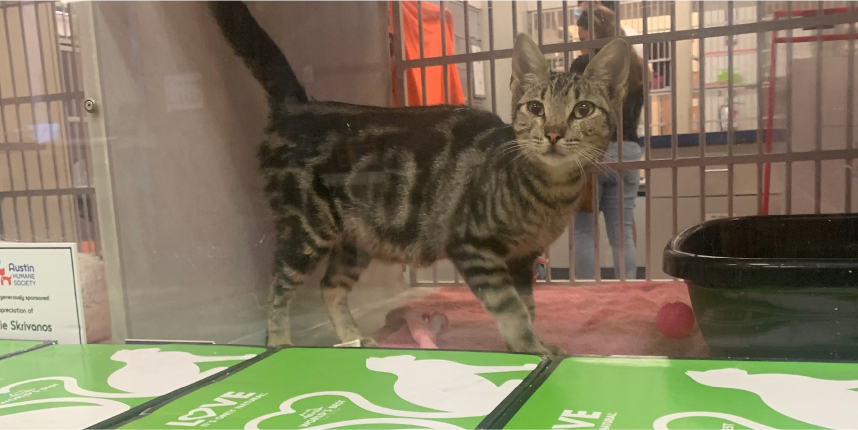120+ CAT SHELTERS, RESCUES, AND CAFéS MAKING A HUGE DIFFERENCE
Learn about 120+ shelters, rescues, and cafes across the country that are making a difference in the lives of cats and other animals.

Cats & Kids: What to Think About When Adopting a Cat with a Toddler

Love the idea of having a cat your child can grow up with? Dogs may be man’s best friend, but a cat will most certainly be your kid’s. Cats like to play, eat and sleep, which works out well because children tend to enjoy the same things.
A cat can be your child’s best friend, protector and snuggle buddy for years to come. However, adding a cat into a household with children is not so simple as picking up a cat from the local shelter and bringing them home. While cats and kids can be a purrfect pairing, there are a few things you’ll want to take into account before adopting to ensure it’s a successful match.
What to Consider Before Adopting a Cat with a Toddler

1. Your child’s temperament
While cats can be great companions for children, they need to be handled gently for their own safety and could become injured if not, or even lash out to defend themselves. If your toddler tends to be easy-going and good with any pets they encounter, this likely won’t be an issue, however, some children like to play more enthusiastically and energetically, so a cat may not be the best addition to their household.
2. Your family’s schedule
Cats are relatively low-maintenance pets, however, they still need regular companionship and attention, as well as meals and litter box care each day. Caring for a child, especially in families with full-time working parents, can be extremely time-consuming. Consider the amount of time you could dedicate to caring for a feline, before you decide to adopt.

3. Your living environment
Are you looking to size up your living space as your family grows? That’s great! Cats need room to run and play. If you’re short on personal space at home, adding a cat into the mix is likely not the best option. Before you adopt, make sure your home has ample room to accommodate another living being comfortably.
4. A comfortable cat match
Just like humans, some cats are better around kids than others. When you start the search for your perfect cat, check with the shelter which cats tend to be comfortable around kids. Senior cats tend to be calmer and better attuned to reading body language, while kittens are often rambunctious and live in their own world. Though you may be inclined to opt for a kitten, a senior cat may prove the better companion for your child in the long run.
5. Nailing the introduction

Take things slow when it comes to introducing your toddler to your cat. Both cats and toddlers can be picky and scare easily, so it’s a good idea to set up a gate between the two, or a glass door, so both your child and cat have time to grow accustomed to each other’s presence before they officially meet face to face. Once the shock of each other’s presence has worn off, wait until your cat is feeling relaxed or tired to, with supervision, allow your child to say hello and learn how to gently pet them.
6. Expect a learning curve
Spend time teaching your child about your cat’s body language and about their anatomy (claws, tail, etc.) so they know what behavior is okay (petting) and what isn’t (tail pulling, tummy scratches.) Teaching your child about your cat’s body language, will help them understand when the cat wants to play, fight or snuggle.
Knowing what to expect when you’re expecting (to adopt a cat) will help keep your household running smoothly throughout the transition, and ensure your child has a furry friend to look out for them as they grow. For more information, plus fun games and coloring pages your kids will love, get a copy of our A-Z Adoption Guide!



